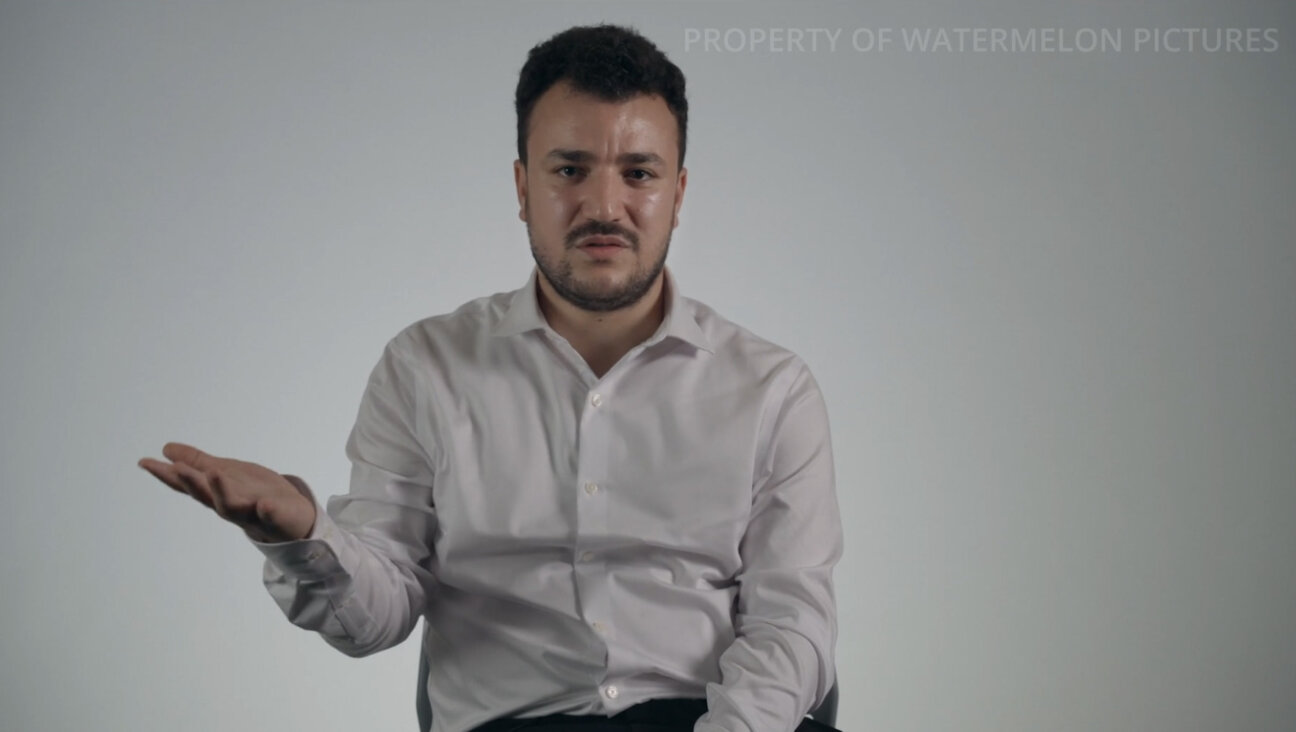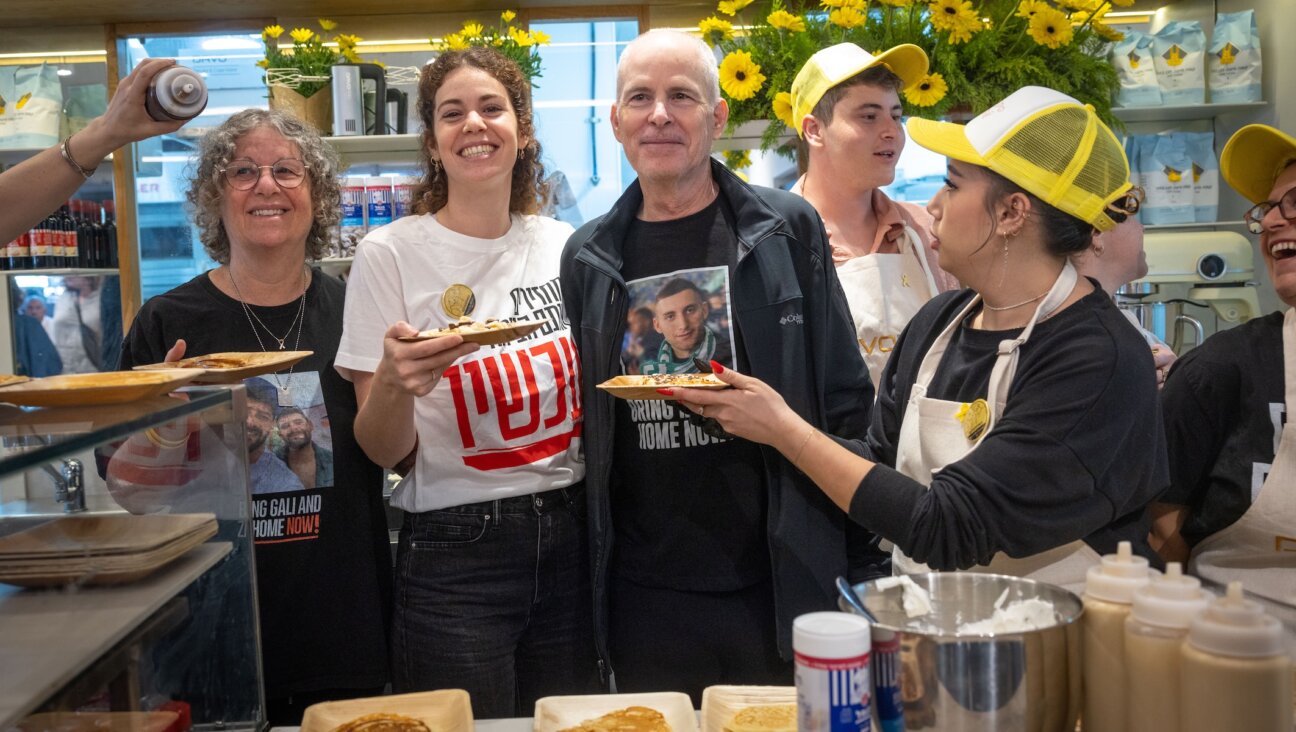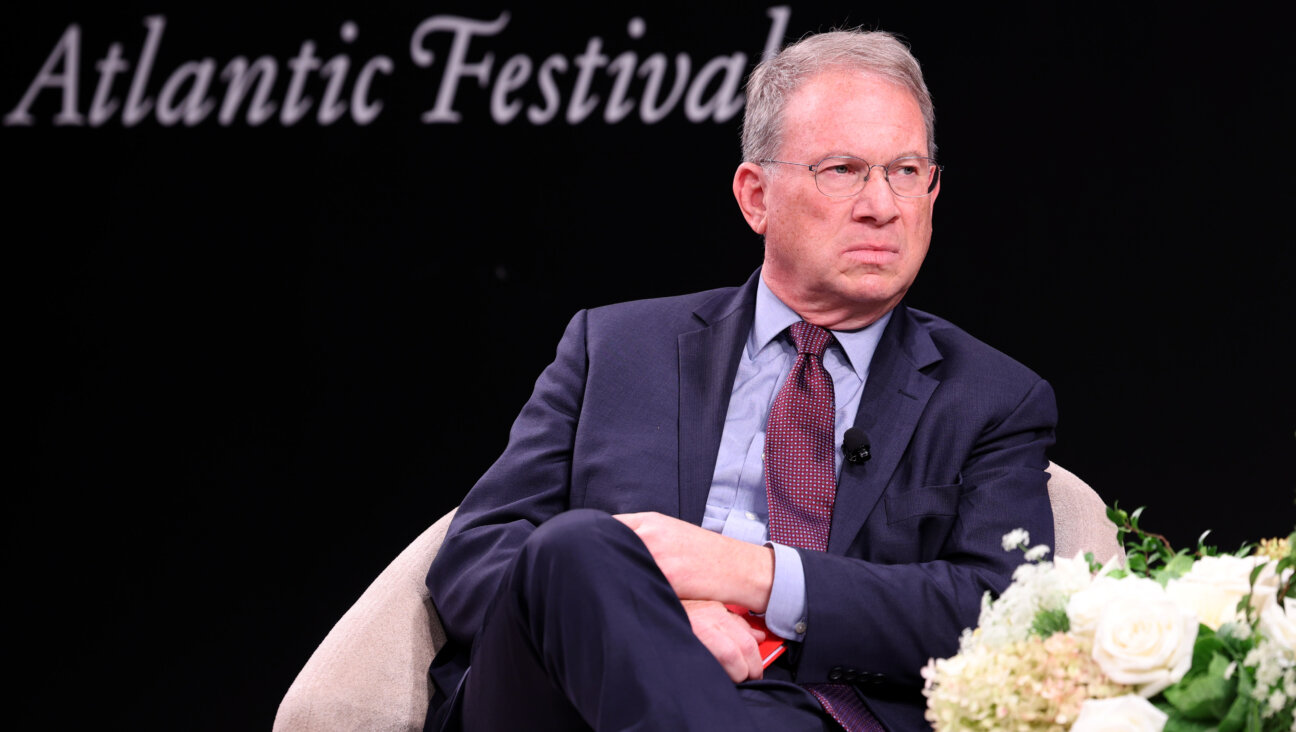Long Lost Twins, Reunited
Human beings have always been fascinated by twins. Romulus and Remus, Jacob and Esau, Mary-Kate and Ashley. We love ultrasound images of twins hugging (or punching) in utero, stories about shared secret languages, notions of twin-to-twin ESP, movies like “The Parent Trap.” (But c’mon, identical cousins? That’s crazy talk!)
As children, many of us fantasized about having a twin: a perpetual playmate, a partner in mischief, someone who’d love us unconditionally. Even for adults, the notion of identical twins separated at birth is emotionally resonant. There’s a reason it’s a theme in fairy tales and folk tales, stories that speak to our psyches’ most powerful needs. Somewhere out there is someone who is exactly like us! What would it feel like to look into a face exactly like our own? Would my twin share my love of mid-century modern design, my fascination with Morocco, my encyclopedic memory of the names of minor ’70s actors who guest-starred on “The Love Boat”?
And what if she suddenly materialized in my life?
That’s essentially what happened to Brooklyn writer Paula Bernstein. I’d known Paula slightly for years; she wrote a lovely essay for Redbook many years ago refuting the persistent belief that all adoptees want to search for their birth parents. Her adoptive family was her family, she wrote; her adoptive mother was her mother. But then, out of the blue, an adoption agency called her and told her about the identical twin sister she didn’t know she had. Her sister wanted to meet her. Thrilled and terrified, she headed to Café Mogador in the East Village of Manhattan to make the acquaintance of Elyse Schein. And in their new book “Identical Strangers: A Memoir of Twins Separated and Reunited” (Random House), they write, in alternating chapters, about their experience of finding each other and their origins.
I met them for coffee at Café Mogador, three years after their first meeting. Now 38, they have different haircuts, have made different choices in hair color, do their makeup differently. But they clearly look alike, with thick hair, upturned noses, slender but curvy frames. They quickly discovered they had the same childhood habit of sucking their middle fingers, the same adult habit of absentmindedly typing their thoughts on an invisible keyboard while pondering. Both edited their high school newspapers and studied film in college. Paula wrote film criticism; Elyse became a filmmaker. They both collected Alice in Wonderland dolls and kept them in the boxes — a fitting pastime for two young women who slipped down a rabbit hole into a confusing, sometimes frightening adventure.
They’re now regulars at Café Mogador. The waiter greets them warmly; they show him an advance copy of their book and tell him what it’s about. He begins fluttering his hands and gasps, “Oh my God, zat makes my heart beat so fast! Oh my God, zat is awesome!”
Well, it is and it isn’t. As Paula writes, “Once you find someone, you can’t unfind her.” The women’s journey from strangers to sisters has clearly been rocky. Paula is the straight-arrow sister, the married mom of two with the comfortable bourgeois life. Elyse is the dreamer, the vagabond, the solo seeker who’s lived a boho life in Paris, trying on a variety of jobs. But as they got to know each other, and struggled to piece together their history, their quest united them.
“For me, the search began when I reached the age when my adoptive mother died — 33,” Elyse said. “I realized that my birth mother could be dead. Time was passing. I was ready to unravel the mystery that had shadowed my life.” Elyse had always felt a part of her was missing. “I’d felt so different from my adoptive family,” she said. “They weren’t interested in the arts or reading or travel. Growing up in Oklahoma I would look for the Village Voice and Interview magazine, and listen to Suzanne Vega. I always felt drawn to New York.”
Paula was raised in a more typical Jewish intellectual family, and was at first a little threatened by Elyse’s appearance in her life. “My initial response was both fear and excitement. The moment we met, I felt I was meeting my long-lost best friend. I could tell her anything. And then as that initial exhilaration wore off, I thought, oh my God, I’ve committed to a long-term relationship with a stranger. I felt protective of my life. I wished we hadn’t been separated, but also that I hadn’t been contacted. What would it mean to be in each other’s lives?”
Much of “Identical Strangers” is a detective story, with Paula and Elyse trying to find the truth about their origins. They were both adopted from the Louise Wise Agency, the premier upscale Jewish adoption agency on the Upper East Side. (It closed in 2004.) The girls were placed in homes of similar socioeconomic class. Both had older brothers adopted from the agency. Neither of their families was informed that the daughter they were adopting was an identical twin. Researchers came to their homes to study them, but the families weren’t told why. Slowly, Paula and Elyse uncover yet another disturbing fact: They were part of a secret study of identical twins reared apart.
The study’s lead researcher was Viola Bernard, a famous psychologist and one of the first women to graduate from Cornell Medical School. Bernard was the daughter of Jacob Wertheim, a wealthy German-Jewish businessman and philanthropist. She lived in an ashram from 1926 to 1930 and studied yoga and Eastern philosophy long before they were trendy. During World War II, she housed refugees from Nazi Germany in her summer home in Nyack, N.Y. Shortly after Elyse and Paula’s birth, she was elected vice president of the American Psychiatric Association. Bernard fervently believed that identical twins fared better when reared apart and allowed to develop without being constantly compared to their sibling, despite the prevailing thinking (then and now) that it was unethical to separate twins. But Bernard’s childhood friend Justine Wise Polier, the daughter of Louise Wise and Stephen Wise (founder of the influential Free Synagogue), ran the Louise Wise Agency after her mother’s death and allowed Bernard to do her research.
“This agency was funded by the organized Jewish community and founded to protect the welfare of Jewish children,” Paula said. “It was run by super-progressive philanthropist intellectuals. How could they do this?”
Paula and Elyse tracked down several other separated multiples who were part of the secret study. But what, exactly, was Bernard looking for? The archives are sealed at Yale University until 2066; Paula and Elyse petitioned, unsuccessfully, to be allowed access. They spoke to Bernard’s colleague, an elderly psychologist named Peter Neubauer, who was furious at being questioned and less than forthcoming. Paula writes that after learning shocking things about the conditions of her early life, and after being stonewalled and yelled at by a God-playing scientist with a Middle European accent, she thought momentarily about Josef Mengele’s twin studies.
I don’t want to spoil the detective story by telling you what else the sisters discovered, or whether they found their birth mother. “As close as we are and as unique and special as our bond is, there will always be a tinge of sadness that we can’t ever complete our process,” Paula said. “We can never get those 35 years back,” Elyse continued. The women frequently complete each other’s thoughts, even though they’ve only known each other a short time.
Both women still feel adamantly that their adoptive families are their real families. “Giving birth doesn’t make you family; it’s raising and supporting children that do that,” Paula said. Paula and Elyse were lucky to be raised by parents who wanted and loved them. And giving up a child to adoption can be a courageous, noble choice. But there’s nothing noble about keeping whole families in the dark.
Write to Marjorie at [email protected].
The Forward is free to read, but it isn’t free to produce

I hope you appreciated this article. Before you go, I’d like to ask you to please support the Forward.
At a time when other newsrooms are closing or cutting back, the Forward has removed its paywall and invested additional resources to report on the ground from Israel and around the U.S. on the impact of the war, rising antisemitism and polarized discourse.
Readers like you make it all possible. We’ve started our Passover Fundraising Drive, and we need 1,800 readers like you to step up to support the Forward by April 21. Members of the Forward board are even matching the first 1,000 gifts, up to $70,000.
This is a great time to support independent Jewish journalism, because every dollar goes twice as far.
— Rachel Fishman Feddersen, Publisher and CEO
2X match on all Passover gifts!
Most Popular
- 1

Film & TV What Gal Gadot has said about the Israeli-Palestinian conflict
- 2

News A Jewish Republican and Muslim Democrat are suddenly in a tight race for a special seat in Congress
- 3

Fast Forward The NCAA men’s Final Four has 3 Jewish coaches
- 4
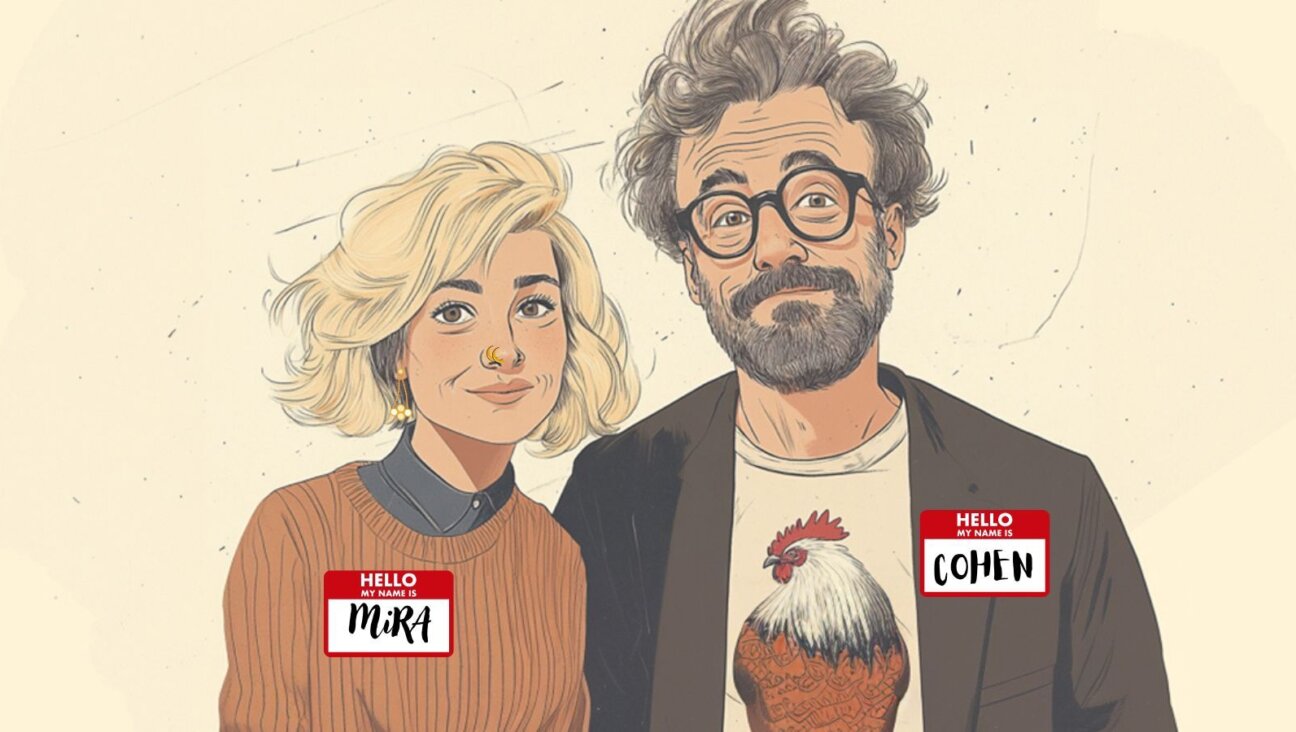
Culture How two Jewish names — Kohen and Mira — are dividing red and blue states
In Case You Missed It
-
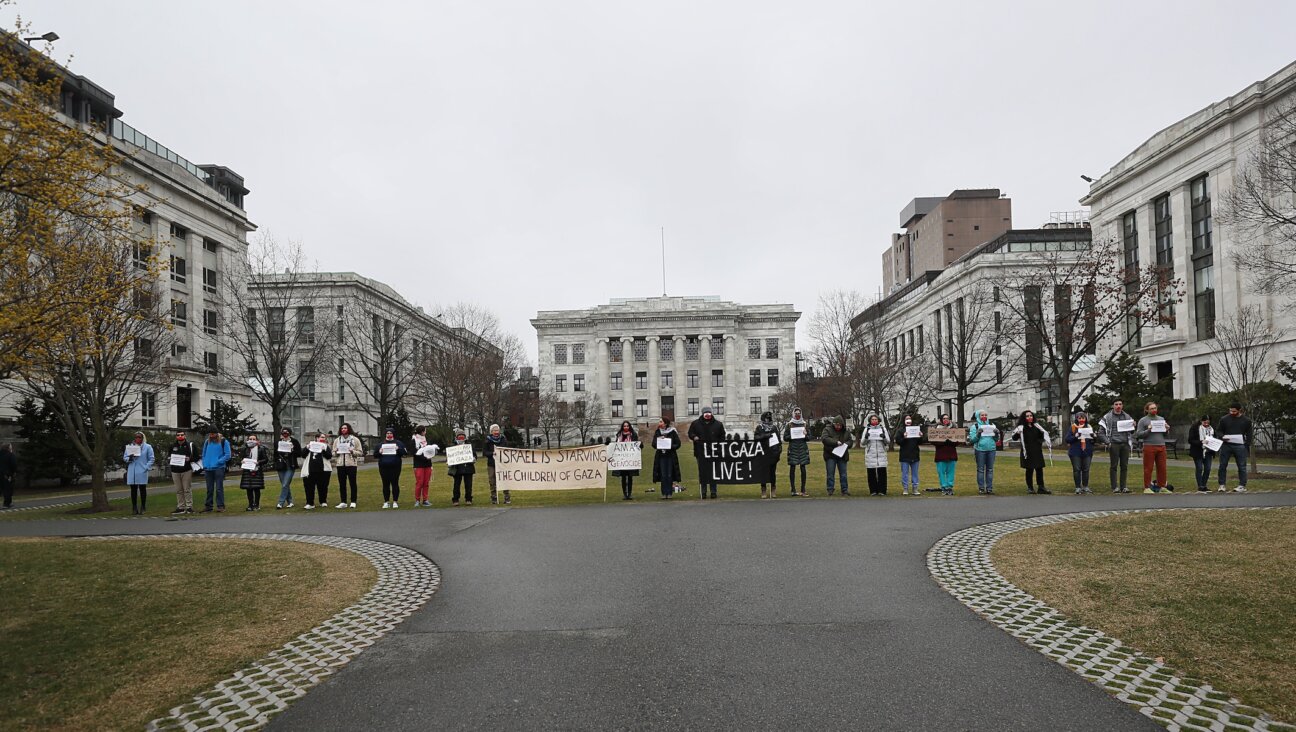
Fast Forward Trump administration to review nearly $9 billion in Harvard funding over campus antisemitism
-
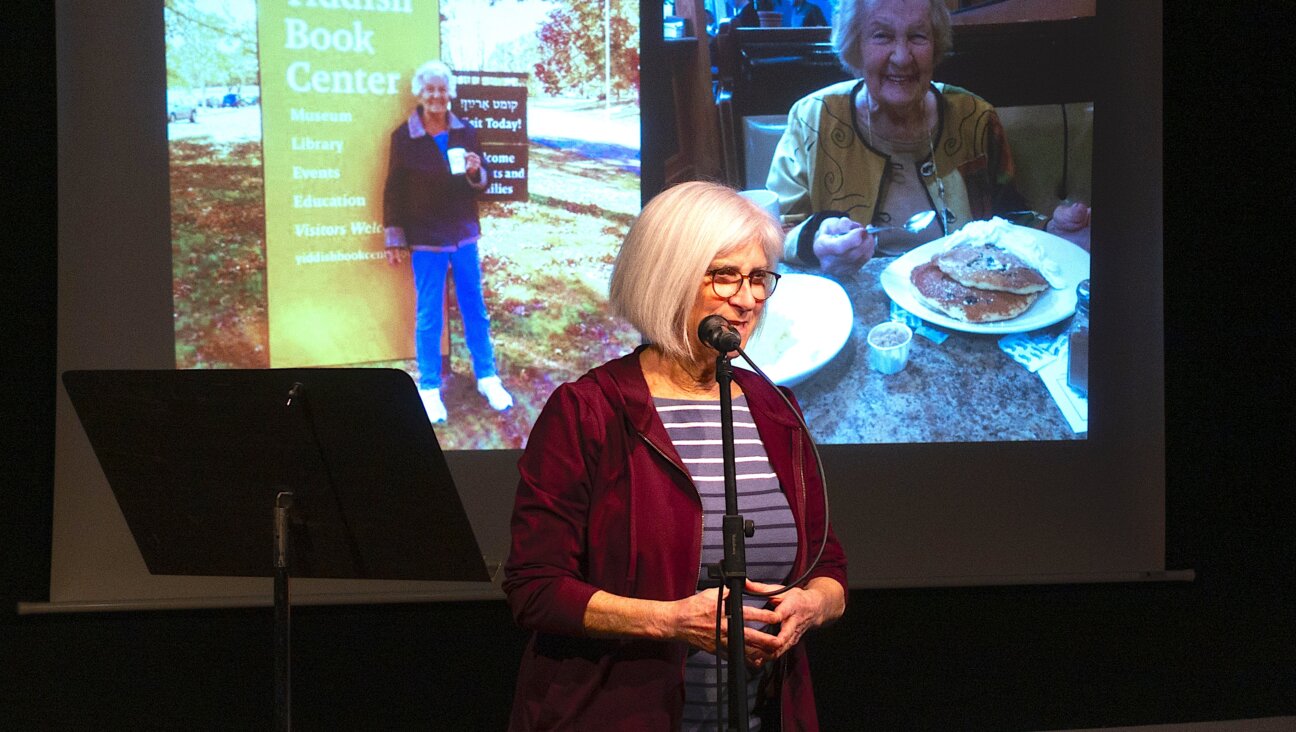
Yiddish World Yiddish fans in Berlin launch a Yiddish open mic series
-

Fast Forward Cornell pro-Palestinian student leader opts to leave US, as Columbia ‘self-deportee’ makes her case to return
-

Fast Forward ‘Need a final solution’: Podcast host calls for mass deportation of U.S. Jews
-
Shop the Forward Store
100% of profits support our journalism
Republish This Story
Please read before republishing
We’re happy to make this story available to republish for free, unless it originated with JTA, Haaretz or another publication (as indicated on the article) and as long as you follow our guidelines.
You must comply with the following:
- Credit the Forward
- Retain our pixel
- Preserve our canonical link in Google search
- Add a noindex tag in Google search
See our full guidelines for more information, and this guide for detail about canonical URLs.
To republish, copy the HTML by clicking on the yellow button to the right; it includes our tracking pixel, all paragraph styles and hyperlinks, the author byline and credit to the Forward. It does not include images; to avoid copyright violations, you must add them manually, following our guidelines. Please email us at [email protected], subject line “republish,” with any questions or to let us know what stories you’re picking up.







